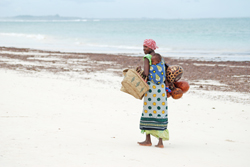Currents of the second Somali migration wave
Over a decade of war in Somalia has left a toll on its people. Today, Somalis are the third largest registered refugee population in the world with hundreds of thousands fleeing to save their lives. One of the many countries to which Somalis fled for asylum is the Netherlands - many are now Dutch citizens. As EU citizens this means they can move more freely between Member States. And many have taken this opportunity to relocate to the UK - a so-called 'secondary movement' allowing them to reach what many claim was their destination of choice. It is estimated that a third of the Dutch Somali community (around 10 000 people) has moved to the UK. Yet very little is known about the specific characteristics of these movements. Reports also suggest that both legal and illegal asylum seekers are taking part in this secondary migration movement. This makes migration a more complex phenomenon than it appears on paper, which is a challenge for policy-makers and authorities to manage. The 'Secondary movements of Somalis within Europe' (Secondary Movements) project tackled this challenge. Based on 33 in-depth interviews with Dutch Somalis in London and Leicester the project answered the key question about the motivation for relocating. Their findings suggest, for example, that the second-move Somalis find the UK easier to call home. This is due to opportunities for employment and education as well as to Somalis' ability to more easily maintain their ethnic and religious identity. If and how refugees will integrate within a national context is something that interests policy-makers and politicians. The results of this research project should help shed some light on the bigger picture of migration by taking into account patterns of intra-European mobility and the factors that influence them.



